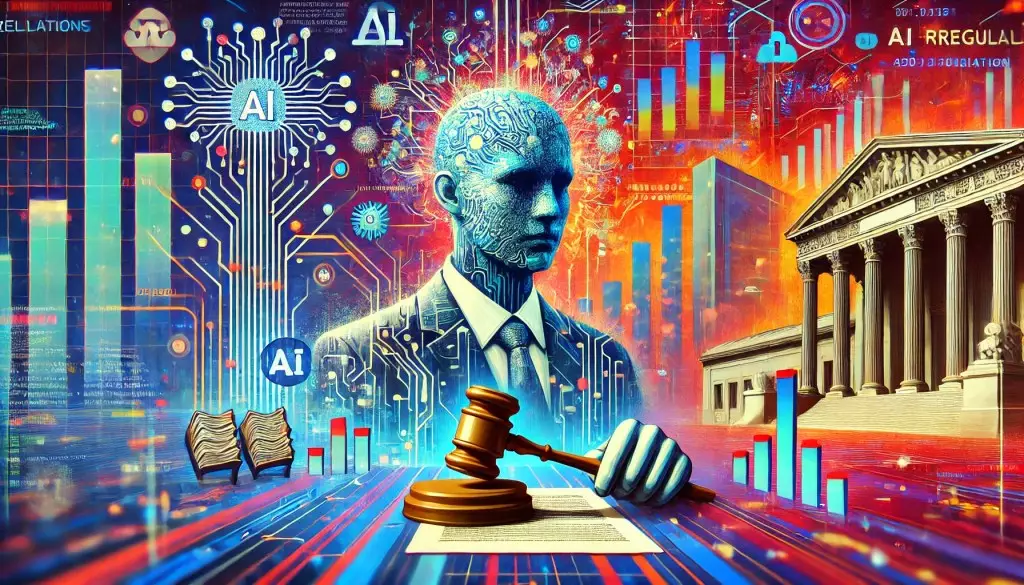The rapidly evolving realm of artificial intelligence (AI) has witnessed significant contention between government regulations and market innovation. The backdrop of this discussion resonates with shifting political tides, especially following the Trump administration’s rollback of regulatory measures initially introduced under President Biden’s tenure. This complex dynamic reveals a pivotal moment as key industry figures rally for a more enabling environment to foster technological advancement and sustain competitiveness on a global stage, particularly in relation to China.
During a lengthy Senate hearing organized by the Committee on Commerce, Science and Transportation, a cohort of industry leaders, including Sam Altman, Lisa Su, and Brad Smith, made a compelling case for urgent infrastructure development to facilitate AI growth. Their assertion is clear: in order for the United States to assert its dominance in AI, an expedited permitting process for critical facilities—such as data centers and chip fabrication plants—is paramount. This essential infrastructure underpins everything, from the energies necessary to power advanced technologies to the skilled workforce that can bring them to life.
The Necessity of Infrastructure and Workforce
At the heart of this dialogue is the understanding that the AI landscape is only as strong as the systems that support it. Altman, for instance, emphasized a dual revolution of “abundant intelligence and abundant energy,” suggesting that the next decade is not merely about technological prowess; it is also about harnessing the necessary resources. His vision underscores a crucial synergy between energy production and AI development, suggesting that without robust power supply mechanisms, AI innovation will stagnate.
Moreover, discussions surrounding the critical need for more skilled workers further crystallize the urgency of this issue. Policymakers were alerted to the pressing need for electricians and other skilled workers who are integral to building the infrastructure that supports AI. Additionally, easing immigration barriers for software talent stands as an essential facet of this strategy, promoting a more diverse and talented workforce that can invigorate AI innovation across the United States.
The Imperative for Global Connection
What emerged significantly during this hearing is the dichotomy between national priorities and global realities. While there is a strong desire within the Trump administration to drive an “America First” agenda—which emphasizes local job creation and the use of domestically sourced technologies—industry leaders cautioned against isolationism. According to these executives, true competitiveness dictates a need for robust engagement with international markets and talent.
Brad Smith extended this argument, highlighting the significance of “AI diffusion,” which refers to the widespread adoption of generative AI across various sectors. He stressed that fostering an environment where cooperation and interchange can thrive is essential not just domestically, but on a global scale. This notion resonates with Altman’s remarks about the imperative to maintain the trust of international allies if the U.S. intends to retain its leadership in the AI sphere.
Addressing the Challenge of Talent and Innovation
While infrastructure and workforce considerations are paramount, the complex landscape of AI regulations and the need for open ecosystems cannot be understated. Lisa Su highlighted the necessity of an open innovation ecosystem—where ideas can flow unimpeded and every sector can contribute to America’s technological prowess. This stance reflects a growing recognition that competitive marketplaces fuel creativity and innovation.
Yet, accompanying these calls for a freer exchange of ideas is a pressing need to address the growing demand for advanced chips used in AI models. The semiconductor production, essential to the training of powerful AI systems, remains sluggish and costly in the U.S. This bottleneck poses a significant hurdle, necessitating effective legislation like the Chips and Science Act to promote investments in domestic chip fabrication.
The Complexity of Regulation and Its Impact
The tension between fostering innovation and establishing regulatory frameworks looms large over discussions about AI. Executives at the Senate hearing voiced a consensus that while some form of government guidance is beneficial, heavy-handed approaches—like pre-approval processes for model releases—could stifle innovation. Indeed, the comparison to the EU’s stringent regulatory schemes serves as a cautionary tale; executives argue for a balanced approach that encourages innovation without compromising safety or ethical standards.
In a broader sense, the current hesitance towards regulatory frameworks mirrors historical responses to transformative technologies, marking a critical point in AI policy-making. The discourse surrounding AI regulation is not merely about safeguarding interests but reimagining the ways in which technology integrates with everyday lives, both professionally and personally.
The convergence of these discussions points toward a collective understanding: America’s leadership in AI innovation hinges on its capacity to cultivate a resilient infrastructure, nurture a skilled workforce, and engage actively with the global community. As industry stakeholders call for streamlined processes and a forward-thinking approach, the challenge remains clear: create a landscape where innovation can flourish, and technological advancement resonates with global needs and priorities.


Leave a Reply